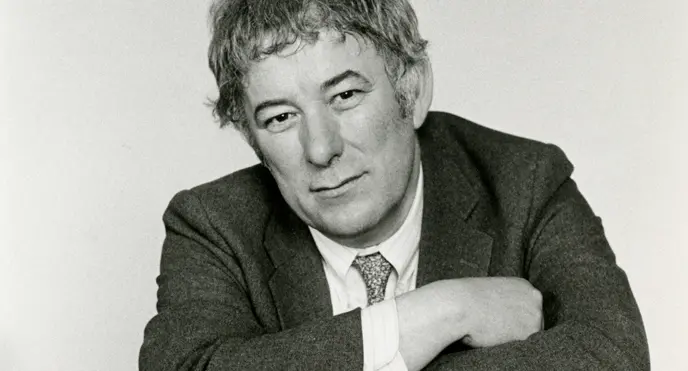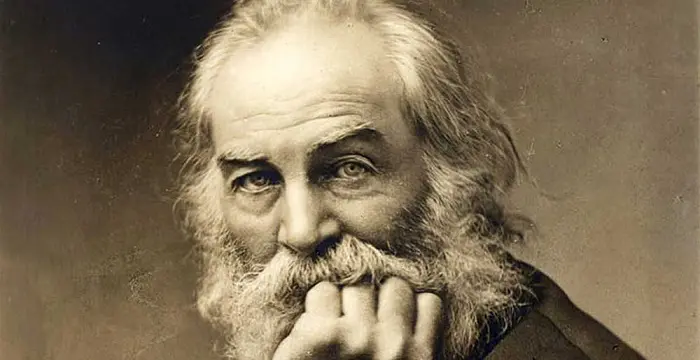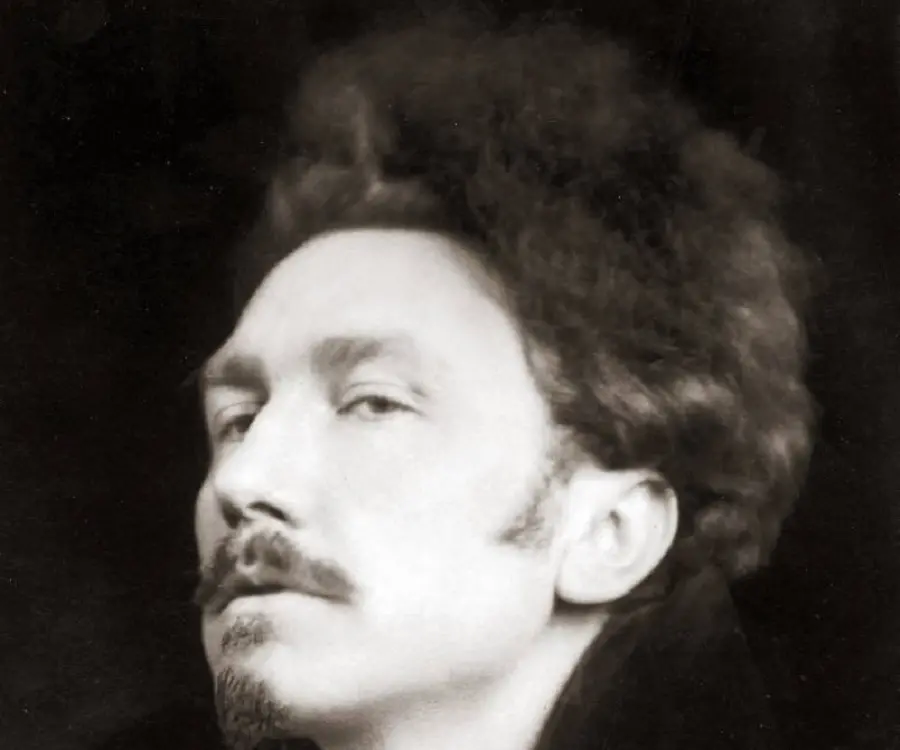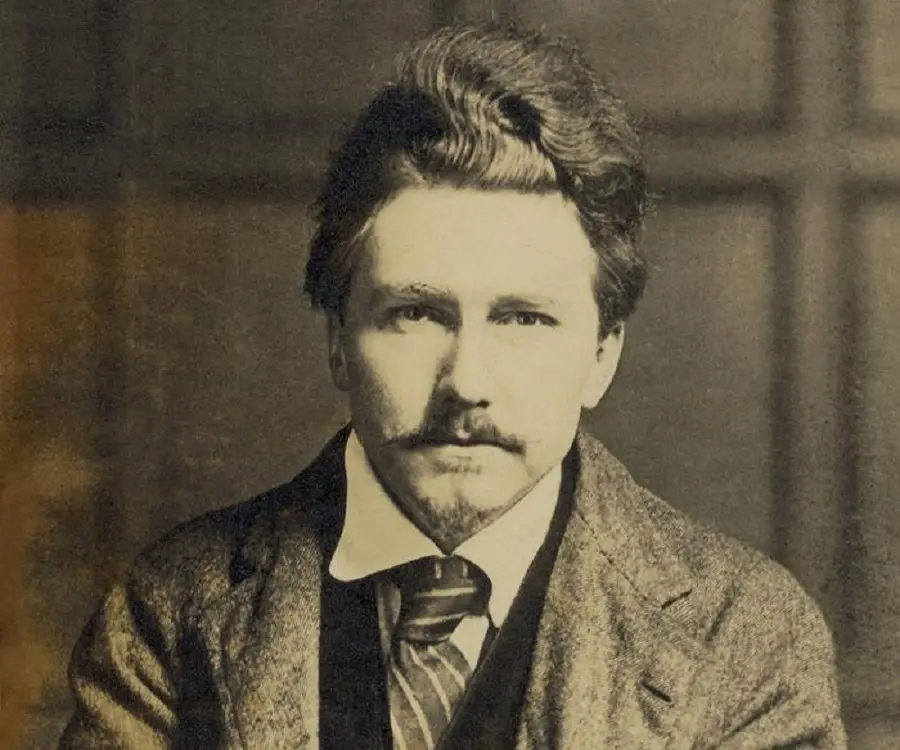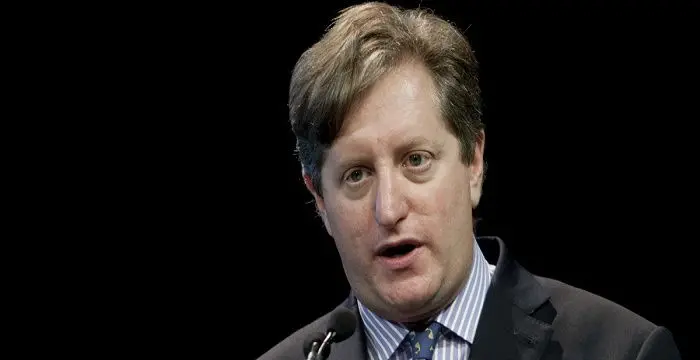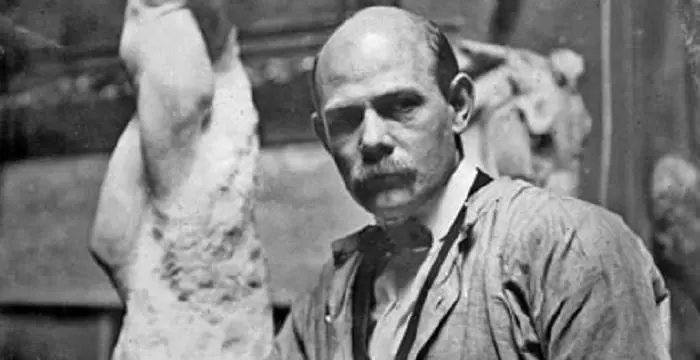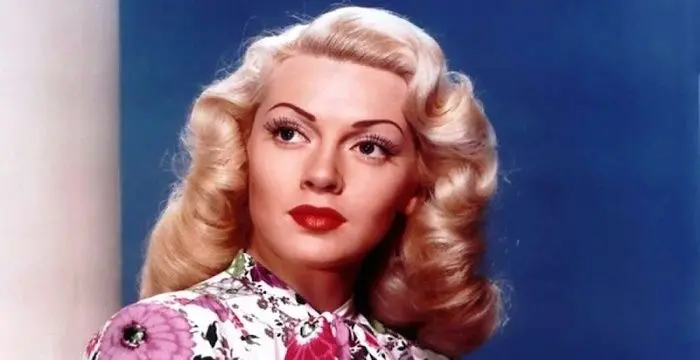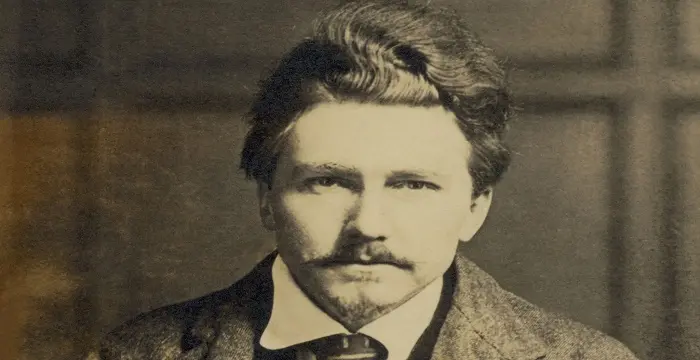
Ezra Pound - Writers, Timeline and Family
Ezra Pound's Personal Details
Ezra Pound, a noted poet and critic, was a major figure in the modernist poetry movement of the 20th century Europe
| Information | Detail |
|---|---|
| Birthday | October 30, 1885 |
| Died on | November 1, 1972 |
| Nationality | American |
| Famous | University Of Pennsylvania, Writers, Poets |
| City/State | Idaho |
| Spouses | Dorothy Shakespear |
| Childrens | Mary, Omar Pound |
| Universities |
|
| Notable Alumnis |
|
| Birth Place | Hailey, Idaho, United States |
| Gender | Male |
| Father | Homer Loomis Pound |
| Mother | Isabel Weston |
| Sun Sign | Scorpio |
| Born in | Hailey, Idaho, United States |
| Famous as | Poet |
| Died at Age | 87 |
// Famous Poets
Charles Bukowski
Charles Bukowski was a German-born American novelist, short story writer and poet. With this biography, learn in details about his childhood, life, works, career and timeline
Seamus Heaney
Nobel Laureate Seamus Heaney was an Irish poet, playwright and translator. Know about his profile, childhood, life and timeline in the biography below.
Walt Whitman
Walt Whitman was an American poet, journalist and humanist. Read this brief biography to find more on his life & timeline.
Ezra Pound's photo
Who is Ezra Pound?
Ezra Pound, a noted poet and critic, was a major figure in the modernist poetry movement of the 20th century Europe. Born in the United States of America in late 19th century, he immigrated to Europe at the age of 23 to establish himself as a poet. After a short stay at Gibraltar and Venice, he moved to London, where he lived for twelve years. It was during this period that he played a leading role in the development of Imagism. He also had an eye for talent and working as a correspondent in various journals, he promoted many budding artists and poets. After the WWI, he shifted to Paris and from there to Italy, blaming Jewish bankers for the war. During the WWII, he actively campaigned for the fascist regime of Italy, concurrently retaining his US citizenship. Consequently at the end of the war, he was arrested for treason; but on being declared insane, he was interned at a mental hospital in the USA, where he continued to write. On his release, he was brought back to Italy, where he breathed his last a few days after his 87th birthday.
// Famous Writers
Joyce Meyer
Joyce Meyer is a Christian author and speaker. This biography provides detailed information about her childhood, life, achievements, works & timeline
Temple Grandin
Temple Grandin is a well-known American writer, autistic activist and animal expert. This biography profiles her childhood, life, achievements, career and timeline
Tennessee Williams
Tennessee Williams was one of the greatest playwrights of the 20th century. This biography of Tennessee Williams provides detailed information about his childhood, life, achievements, works and timeline.
Childhood & Early Life
Ezra Weston Loomis Pound was born on 30 October 1885 in the small mining town of Hailey, then a part of the Territory of Idaho. At the time of his birth, his father, Homer Loomis Pound, originally from Wisconsin, was employed as the Registrar of the General Land Office in Hailey.
Ezra’s mother, Isabel Weston, was from New York. She could not adjust to the life at Hailey and in 1887 she returned to New York, taking eighteen-month-old Ezra with her. Subsequently Homer too followed them. Ezra remained their only child.
In 1889, Homer was appointed an assayer at the Philadelphia Mint and with that the family moved to Jenkintown, located just outside the city. There in 1892, Ezra began his education at the Miss Elliot’s dame school.
Ezra spent a major part of his early years at Wyncote where his father bought a house in 1893. Here he was first enrolled at the Heathcock family's Chelten Hills School. Later in 1894, he was moved to the Florence Ridpath School.
In 1896, while studying at Florence Ridpath School, eleven-year-old Ezra had his first poem published. It was a limerick on the Democratic nominee William Jennings Bryan, who had narrowly lost the 1896 Presidential Election. It was published in the 7 November issue of the ‘Jenkintown Times-Chronicle.’
In 1897, Ezra Pound was admitted to Cheltenham Military Academy, where he studied Latin, English, history, arithmetic, marksmanship, and military drilling. Moreover, it was here that he learned the importance of submitting to the authority.
In 1898, while he was studying at the Military Academy, he was taken on a tour of Europe by his mother and aunt. In this three-month trip, he visited England, Belgium, Germany, Switzerland and Italy.
In 1900, he left the Academy to finish his high school education at Cheltenham Township High School, finally graduating from there in 1901. By now he had decided to become a poet and had told his parents. It is not known if at this stage they had taken him seriously.
After graduating from school, he first entered the University of Pennsylvania's College of Liberal Arts. In 1902, Pound was taken on another three-month’s tour of Europe. Thereafter, he left the university without graduating.
In 1903, Pound entered Hamilton College in Clinton, New York, with philosophy. In addition, he took up a Latin-Scientific course and studied the Provençal dialect as well as Old English.
Now, his aim was to “know more about poetry than any man living” and to fulfill it, he learned nine foreign languages and read oriental literature in translation, fighting with everybody who tried to dissuade him from his path. This was also the time he developed from Dante’s works, the idea of long poems.
In 1905, Pound earned his bachelor’s degree in philosophy from Hamilton College. Thereafter, he returned to the University of Pennsylvania to study Romance languages, a branch of the Italic languages within the Indo-European language family.
In 1906, on earning his M.A. from Pennsylvania, he started working for his doctoral thesis with a Hamilton Fellowship, which not only covered his tuition fees, but also provided a travel allowance of $500. His dissertation was intended to be on the jesters of the Spanish playwright Félix Lope de Vega y Carpio.
However, he never finished his doctoral work; instead in 1907, he started teaching Romance languages at Wabash College in Crawfordsville, Indiana. Unfortunately, the place, as well as the college, was much too conservative for his bohemian mannerism. He therefore lost his job in early 1908.
Birth Of A Poet
Subsequently, he left for Europe sometime in February 1908, arriving at Gibraltar on 23 March. Here he worked for few weeks as a guide to American tourists, earning $15 a day and then moved to Venice in April. At that time, he had only $80 in his kitty.
While in the USA, he had compiled a book of poems, titled ‘A Lume Spento’, but failed to find a publisher for it. Now in Venice, he spent $8 out of his own pocket to self-publish the work. The initial edition was of one hundred copies.
Later that year he moved to London and there he was able to persuade Elkin Mathews, a London publisher and book seller, to display his book. Although it did not have the kind of impact he had expected, by October, he had begun to be discussed in the literary circles.
In December 1908, he self-published another book of poems, titled ‘A Quinzaine for This Yule’ and then spent the following two months teaching at Regent Street Polytechnic. Meanwhile, he managed to persuade Mathews to publish his next three books.
Out of the three, ‘Personae of Ezra Pound’ was published in April 1909. It was his first commercial success and was followed by his fourth book of poems, ‘Exultations of Ezra Pound’, published in October 1909. The next book, ‘The Spirit of Romance’, published in 1910, was on literary criticism.
In the mean time, in January 1909, he met Olivia Shakespear and through her, the English poet W. B. Keats. Subsequently the two men developed a close friendship. Incidentally Olivia’s daughter Dorothy would one day become Pound’s wife.
Eventually Ezra Pound began to be accepted in the London literary and artistic circles and met luminaries like sculptor Henri Gaudier-Brzeska, painter Wyndham Lewis and poet T. E. Hulme. For a short while, he also received patronage from the American heiress Margaret Lanier Cravens.
In June 1910, he returned to the USA, trying to establish himself as a poet in Philadelphia. When that did not happen, he returned to England in early 1911. After a brief visit to Paris, he settled down in London, writing a weekly column for the socialist journal, ‘The New Age.’
A Movement Called Imagism
In 1912, Pound was appointed London correspondent of ‘Poetry’, a Chicago based magazine founded by Harriet Monroe. He worked hard on it, reviewing the works of many upcoming poets like Robert Frost and D. H. Lawrence. Very soon, he became a well-established name in London’s literary circles.
Sometime in the same year, Pound, along with Richard Aldington and Hilda Doolitle decided to start a movement they called Imagism. The main theme of the movement was that, any word that does not contribute directly to the presentation should be avoided.
In October 1912, he had ‘Ripostes of Ezra Pound’ published. The book, containing twenty-five poems, is his first example of Imagism. This was also the book, in which he for the first time used the word ‘Imagiste.’
Subsequently, he began writing for ‘Egoist’ and in 1914, published ‘Des Imagistes’, the first anthology of the Imagism movement. In the same year, he also started collaborating with then un-known James Joyce and helped to publish his two novels, ‘Portrait of the Artist as a Young Man’ and ‘Ulysses.’
At the same time, Pound continued with his own literary pursuits, starting his long poem, ‘The Cantos’ in 1915. However, he was not very earnest in this work for it took him two years to publish ‘Canto III’ in ‘Poetry.’
Maybe that was because the destruction brought about by the World War I had a terrible effect on him. He published a number of works at the conclusion of the war, and then in December 1920, he left England for good. ‘Hugh Selwyn Mauberley’ was the last work completed in England.
In Italy
After residing in London for twelve years, Ezra Pound moved to France. There he became friendly with a number of artists and writers, but by 1924, he was fed up with the Parisian scene and decided to move again. Significantly, it was here in Paris that he developed his friendship with Ernest Hemmingway.
He now chose the city of Rapallo in Italy and there he spent the next two decades of his life. It was here that he actually restarted his work on ‘The Cantos.’
Sometime now, he came to believe that capitalism was the cause of the First World War, blaming the Jewish bankers for it. His greatest fear was that the economy would henceforth be dependent on armament industry and war and peace would depend on its hunger for profit.
He now gave a series of lectures on economics and contacted the US political leaders to discuss international politics. He also met Benito Mussolini on 30 January 1933. Sometime now, he also applied for broadcasting rights on Rome Radio, but believing him to be a double agent, they refused permission.
Ultimately, he received the permission after two years of haggling and from January 1935, he began broadcasting on Rome Radio, criticizing Jews as well as American policies, President Roosevelt, and even his family. He also spoke about poetry, economics, and Chinese philosophy.
In April 1939, he sailed for the USA, trying to stop the country from getting involved in the upcoming Second World War. Unsuccessful in his mission, he returned to Italy in June or July, retaining his US citizenship.
He now began writing anti-Semitic articles for Italian newspapers as well as for Sir Oswald Mosley’s fascist newspaper ‘Action.’ He also wrote a letter to James Laughlin, criticizing Roosevelt, and signed it with “Heil Hitler.”
When the Second World War finally broke out in September 1939, along with writing letters and articles, he continued with his broadcast, which was monitored by Foreign Broadcast Information Service of United States. In 1943, he was tried for treason in absentia; but he defended his right to free speech through a letter.
As the war ended and Italy surrendered to the Allied force, Ezra Pound was arrested by the US Army sometime in May 1945. He imprisoned in a small wire cage with concrete flooring, kept out of door in the American Disciplinary Training Center near Pisa.
It was summer and the daytime was hot; at night his cage was floodlighted. He was also denied communication and exercise. Living under such conditions for two and a half weeks, Pound had a mental breakdown.
Later, he was shifted to a tent, where he was allowed reading material and had access to a typewriter. It was during this period that he wrote ‘The Pisan Cantos.’ Published in 1948 in New York, it is the most admired section of the work.
Arrest & Release
Pound was brought back to the USA on 15 November 1945 and charged with treason on the 25th. But before he could be put to trial, he was declared insane and admitted to St. Elizabeths Hospital. Initially, he was kept in the prisoner’s ward, but later shifted to the more pleasant surroundings of Chestnut Ward.
Here he was allowed to read and write and also entertain visitors. Slowly, he resumed his work on ‘The Cantos’ and also started translating ‘Sophocles's Women of Trachis’ and ‘Electra.’ He felt so comfortable there that he refused to entertain any discussion on his release.
Nonetheless, his friends started campaigning for his release. It received the requisite momentum when Ernest Hemingway, who won the Nobel Prize for Literature in 1954, pledged in 1957 to give $1,500 to Pound upon his release. Ultimately in April 1958, Pound was set free.
In July 1958, Pound was brought back to Italy, where he lived until his death in 1972. Although he resumed his work on ‘The Cantos’ he could never finish it.
Major Works
Ezra Pound is best remembered for his unfinished epic poem, ‘The Cantos.’ Mostly written between 1915 and 1962, the work contains 116 sections, each of which is a ‘canto.’ It is a mixture of satire, hymns, elegies and essays, covering different themes such as economics, governance, culture and memoirs.
Personal Life & Legacy
Ezra Pound married Dorothy Shakespear on 20 April 1914, while he was a budding poet in London. They had one son Omar, who was raised by Dorothy’s mother Olivia Shakespear. Pound hardly knew him.
He also had a life-long affair with American violinist Olga Rudge, whom he met in 1922 while he was living in Paris and with whom he had a daughter named Mary. Although Dorothy accepted the liaison, Mary never knew about her father’s other family until he told her just before his arrest.
Both the women Dorothy and Olga stood by him during his arrest and subsequent release. However, it was Olga who took care of Pound during the last eleven years of his life, while Dorothy lived in London with their son Omar. Unlike his relationship with Omar, Pound was close to Mary and lived with her for some time.
During the last eleven years of his life, Pound suffered from declining health. In spite of that, he traveled to London and Dublin in 1965 and to New York in 1967. However by 30 October 1972, he was too weak to leave his bedroom.
He died on November 1, 1972, because of an intestinal blockage. His body was later buried in the island cemetery, Isola di San Michele.
// Famous University Of Pennsylvania
Sharon Stone
Sharon Stone is a Golden Globe Award winning American actress and former model. Read this biography to learn more about her childhood, profile, life and timeline.
Aaron Yoo
Aaron Yoo is a cinematographer and actor of Korean origin, who was born and raised in the United States of America. This biography of Aaron Yoo provides detailed information about his childhood, life, achievements, works & timeline.
Steve Eisman
Steve Eisman is an American businessman, money manager, and investor. Check out this biography to know about his childhood, family life, achievements and fun facts about him.
Ezra Pound's awards
| Year | Name | Award |
|---|---|---|
Other | ||
| 0 | Bollingen Prize | |
Ezra Pound biography timelines
- // 30th Oct 1885Ezra Weston Loomis Pound was born on 30 October 1885 in the small mining town of Hailey, then a part of the Territory of Idaho. At the time of his birth, his father, Homer Loomis Pound, originally from Wisconsin, was employed as the Registrar of the General Land Office in Hailey.
- // 1887Ezra’s mother, Isabel Weston, was from New York. She could not adjust to the life at Hailey and in 1887 she returned to New York, taking eighteen-month-old Ezra with her. Subsequently Homer too followed them. Ezra remained their only child.
- // 1889 To 1892In 1889, Homer was appointed an assayer at the Philadelphia Mint and with that the family moved to Jenkintown, located just outside the city. There in 1892, Ezra began his education at the Miss Elliot’s dame school.
- // 1893 To 1894Ezra spent a major part of his early years at Wyncote where his father bought a house in 1893. Here he was first enrolled at the Heathcock family's Chelten Hills School. Later in 1894, he was moved to the Florence Ridpath School.
- // 1896 To 1896In 1896, while studying at Florence Ridpath School, eleven-year-old Ezra had his first poem published. It was a limerick on the Democratic nominee William Jennings Bryan, who had narrowly lost the 1896 Presidential Election. It was published in the 7 November issue of the ‘Jenkintown Times-Chronicle.’
- // 1897In 1897, Ezra Pound was admitted to Cheltenham Military Academy, where he studied Latin, English, history, arithmetic, marksmanship, and military drilling. Moreover, it was here that he learned the importance of submitting to the authority.
- // 1898In 1898, while he was studying at the Military Academy, he was taken on a tour of Europe by his mother and aunt. In this three-month trip, he visited England, Belgium, Germany, Switzerland and Italy.
- // 1900 To 1901In 1900, he left the Academy to finish his high school education at Cheltenham Township High School, finally graduating from there in 1901. By now he had decided to become a poet and had told his parents. It is not known if at this stage they had taken him seriously.
- // 1902After graduating from school, he first entered the University of Pennsylvania's College of Liberal Arts. In 1902, Pound was taken on another three-month’s tour of Europe. Thereafter, he left the university without graduating.
- // 1903In 1903, Pound entered Hamilton College in Clinton, New York, with philosophy. In addition, he took up a Latin-Scientific course and studied the Provençal dialect as well as Old English.
- // 1905In 1905, Pound earned his bachelor’s degree in philosophy from Hamilton College. Thereafter, he returned to the University of Pennsylvania to study Romance languages, a branch of the Italic languages within the Indo-European language family.
- // 1906In 1906, on earning his M.A. from Pennsylvania, he started working for his doctoral thesis with a Hamilton Fellowship, which not only covered his tuition fees, but also provided a travel allowance of $500. His dissertation was intended to be on the jesters of the Spanish playwright Félix Lope de Vega y Carpio.
- // 1907 To 1908However, he never finished his doctoral work; instead in 1907, he started teaching Romance languages at Wabash College in Crawfordsville, Indiana. Unfortunately, the place, as well as the college, was much too conservative for his bohemian mannerism. He therefore lost his job in early 1908.
- // Feb 1908Subsequently, he left for Europe sometime in February 1908, arriving at Gibraltar on 23 March. Here he worked for few weeks as a guide to American tourists, earning $15 a day and then moved to Venice in April. At that time, he had only $80 in his kitty.
- // Dec 1908In December 1908, he self-published another book of poems, titled ‘A Quinzaine for This Yule’ and then spent the following two months teaching at Regent Street Polytechnic. Meanwhile, he managed to persuade Mathews to publish his next three books.
- // Jan 1909In the mean time, in January 1909, he met Olivia Shakespear and through her, the English poet W. B. Keats. Subsequently the two men developed a close friendship. Incidentally Olivia’s daughter Dorothy would one day become Pound’s wife.
- // Apr 1909Out of the three, ‘Personae of Ezra Pound’ was published in April 1909. It was his first commercial success and was followed by his fourth book of poems, ‘Exultations of Ezra Pound’, published in October 1909. The next book, ‘The Spirit of Romance’, published in 1910, was on literary criticism.
- // Jun 1910In June 1910, he returned to the USA, trying to establish himself as a poet in Philadelphia. When that did not happen, he returned to England in early 1911. After a brief visit to Paris, he settled down in London, writing a weekly column for the socialist journal, ‘The New Age.’
- // 1912In 1912, Pound was appointed London correspondent of ‘Poetry’, a Chicago based magazine founded by Harriet Monroe. He worked hard on it, reviewing the works of many upcoming poets like Robert Frost and D. H. Lawrence. Very soon, he became a well-established name in London’s literary circles.
- // Oct 1912In October 1912, he had ‘Ripostes of Ezra Pound’ published. The book, containing twenty-five poems, is his first example of Imagism. This was also the book, in which he for the first time used the word ‘Imagiste.’
- // 1914Subsequently, he began writing for ‘Egoist’ and in 1914, published ‘Des Imagistes’, the first anthology of the Imagism movement. In the same year, he also started collaborating with then un-known James Joyce and helped to publish his two novels, ‘Portrait of the Artist as a Young Man’ and ‘Ulysses.’
- // 20th Apr 1914Ezra Pound married Dorothy Shakespear on 20 April 1914, while he was a budding poet in London. They had one son Omar, who was raised by Dorothy’s mother Olivia Shakespear. Pound hardly knew him.
- // 1915At the same time, Pound continued with his own literary pursuits, starting his long poem, ‘The Cantos’ in 1915. However, he was not very earnest in this work for it took him two years to publish ‘Canto III’ in ‘Poetry.’
- // 1915 To 1962Ezra Pound is best remembered for his unfinished epic poem, ‘The Cantos.’ Mostly written between 1915 and 1962, the work contains 116 sections, each of which is a ‘canto.’ It is a mixture of satire, hymns, elegies and essays, covering different themes such as economics, governance, culture and memoirs.
- // Dec 1920Maybe that was because the destruction brought about by the World War I had a terrible effect on him. He published a number of works at the conclusion of the war, and then in December 1920, he left England for good. ‘Hugh Selwyn Mauberley’ was the last work completed in England.
- // 1922He also had a life-long affair with American violinist Olga Rudge, whom he met in 1922 while he was living in Paris and with whom he had a daughter named Mary. Although Dorothy accepted the liaison, Mary never knew about her father’s other family until he told her just before his arrest.
- // 1924After residing in London for twelve years, Ezra Pound moved to France. There he became friendly with a number of artists and writers, but by 1924, he was fed up with the Parisian scene and decided to move again. Significantly, it was here in Paris that he developed his friendship with Ernest Hemmingway.
- // 30th Jan 1933He now gave a series of lectures on economics and contacted the US political leaders to discuss international politics. He also met Benito Mussolini on 30 January 1933. Sometime now, he also applied for broadcasting rights on Rome Radio, but believing him to be a double agent, they refused permission.
- // Jan 1935Ultimately, he received the permission after two years of haggling and from January 1935, he began broadcasting on Rome Radio, criticizing Jews as well as American policies, President Roosevelt, and even his family. He also spoke about poetry, economics, and Chinese philosophy.
- // Apr 1939In April 1939, he sailed for the USA, trying to stop the country from getting involved in the upcoming Second World War. Unsuccessful in his mission, he returned to Italy in June or July, retaining his US citizenship.
- // Sep 1939When the Second World War finally broke out in September 1939, along with writing letters and articles, he continued with his broadcast, which was monitored by Foreign Broadcast Information Service of United States. In 1943, he was tried for treason in absentia; but he defended his right to free speech through a letter.
- // May 1945As the war ended and Italy surrendered to the Allied force, Ezra Pound was arrested by the US Army sometime in May 1945. He imprisoned in a small wire cage with concrete flooring, kept out of door in the American Disciplinary Training Center near Pisa.
- // 15th Nov 1945Pound was brought back to the USA on 15 November 1945 and charged with treason on the 25th. But before he could be put to trial, he was declared insane and admitted to St. Elizabeths Hospital. Initially, he was kept in the prisoner’s ward, but later shifted to the more pleasant surroundings of Chestnut Ward.
- // 1948Later, he was shifted to a tent, where he was allowed reading material and had access to a typewriter. It was during this period that he wrote ‘The Pisan Cantos.’ Published in 1948 in New York, it is the most admired section of the work.
- // Jul 1958 To 1972In July 1958, Pound was brought back to Italy, where he lived until his death in 1972. Although he resumed his work on ‘The Cantos’ he could never finish it.
- // 1st Nov 1972He died on November 1, 1972, because of an intestinal blockage. His body was later buried in the island cemetery, Isola di San Michele.
// Famous Idaho peoples
Emmi Butler
Emmi Butler is an American YouTuber and social media star. Let’s take a look at her family and personal life including age, date of birth, net worth, and fun facts.
Avia Butler
Check out all that you wanted to know about Avia Butler, the famous American YouTube personality; her birthday, her family and personal life, fun trivia facts and more.
Logan Butler
Check out all that you wanted to know about Logan Butler, the famous YouTube Personality; his birthday, his family and personal life, his girlfriends, fun trivia facts and more.
Robyn Hilton
Robyn Hilton is an American actress known for her role in ‘Blazing Saddles.’ Check out this biography to know about her birthday, childhood, family life, achievements and fun facts about her.
Gutzon Borglum
Gutzon Borglum was an artist and sculptor from America. Check out this biography to know about his childhood, family life, achievements and fun facts about his life.
Lana Turner
Lana Turner was an American TV and film actress. This biography profiles her childhood, early life, career, major works, awards, achievements, personal life, legacy, timeline and trivia.
Ezra Pound's FAQ
What is Ezra Pound birthday?
Ezra Pound was born at 1885-10-30
When was Ezra Pound died?
Ezra Pound was died at 1972-11-01
Where was Ezra Pound died?
Ezra Pound was died in Venice
Which age was Ezra Pound died?
Ezra Pound was died at age 87
Where is Ezra Pound's birth place?
Ezra Pound was born in Hailey, Idaho, United States
What is Ezra Pound nationalities?
Ezra Pound's nationalities is American
Who is Ezra Pound spouses?
Ezra Pound's spouses is Dorothy Shakespear
Who is Ezra Pound childrens?
Ezra Pound's childrens is Mary, Omar Pound
What was Ezra Pound universities?
Ezra Pound studied at University Of Pennsylvania, University of Pennsylvania, Hamilton College
What was Ezra Pound notable alumnis?
Ezra Pound's notable alumnis is University Of Pennsylvania
Who is Ezra Pound's father?
Ezra Pound's father is Homer Loomis Pound
Who is Ezra Pound's mother?
Ezra Pound's mother is Isabel Weston
What is Ezra Pound's sun sign?
Ezra Pound is Scorpio
How famous is Ezra Pound?
Ezra Pound is famouse as Poet

